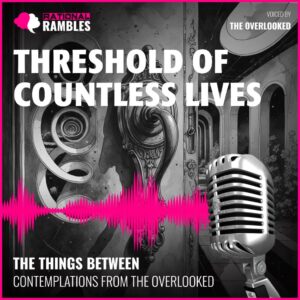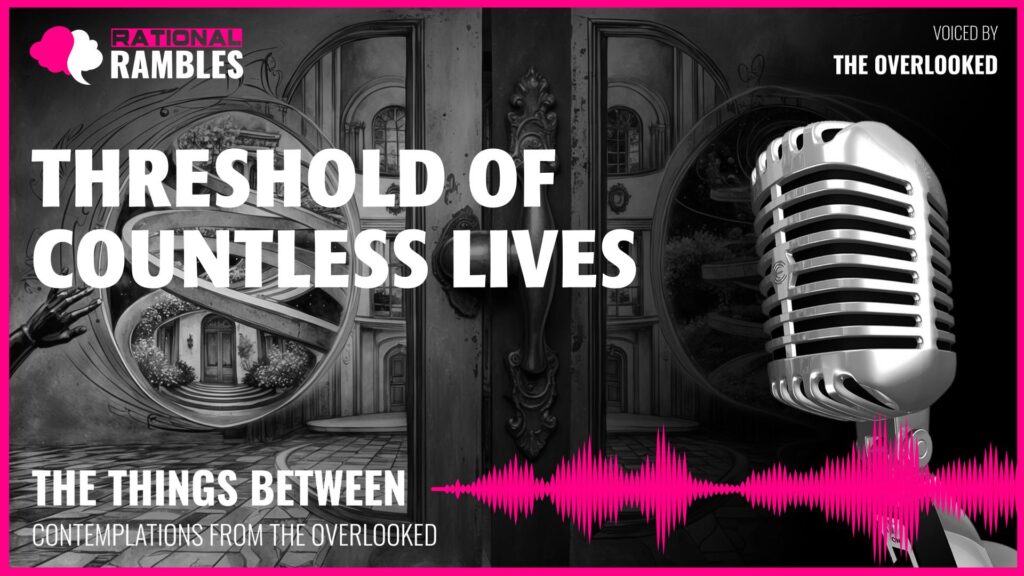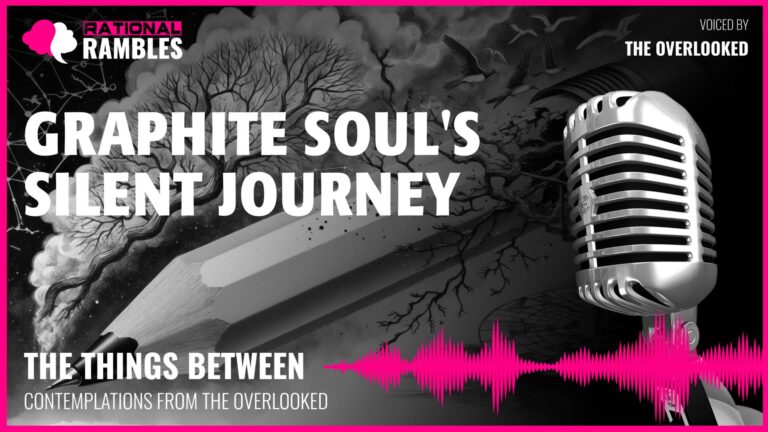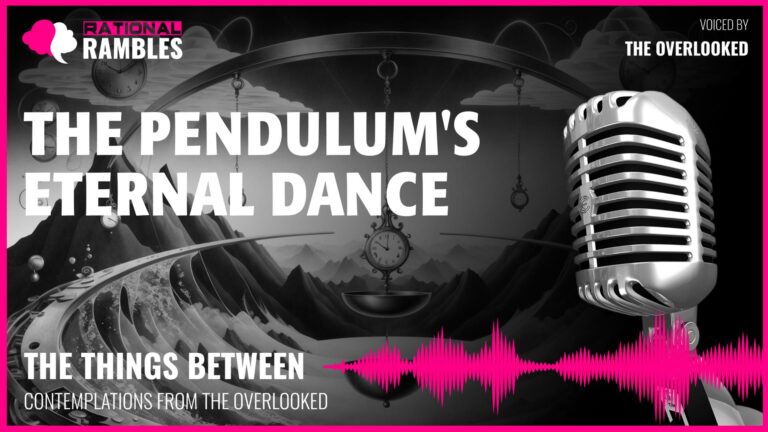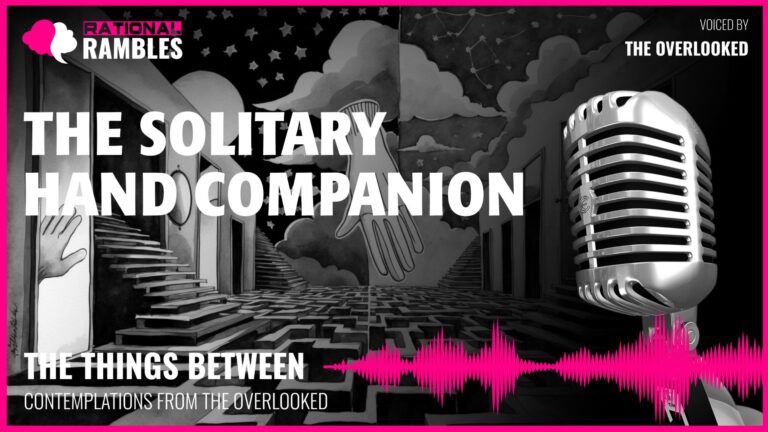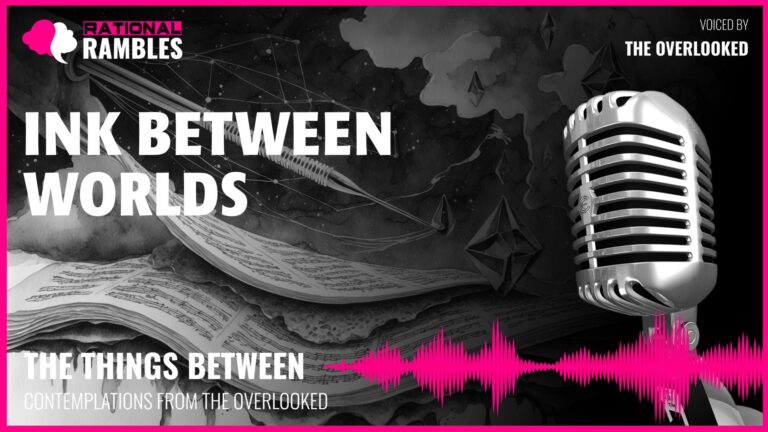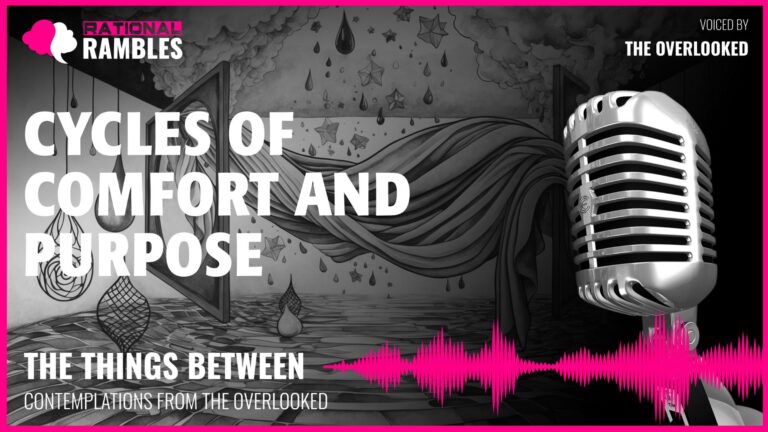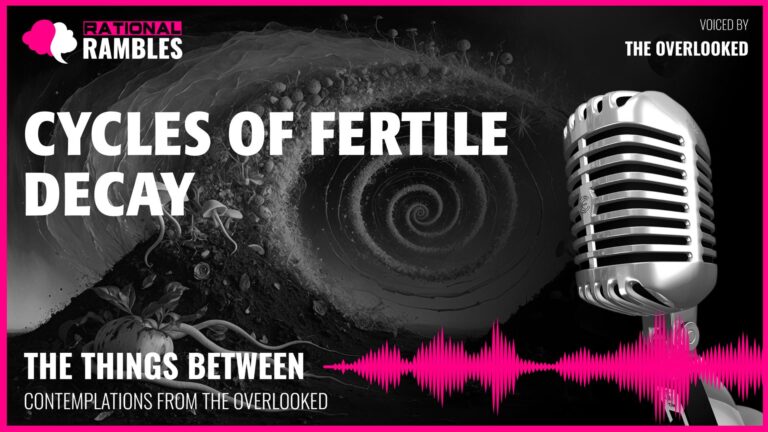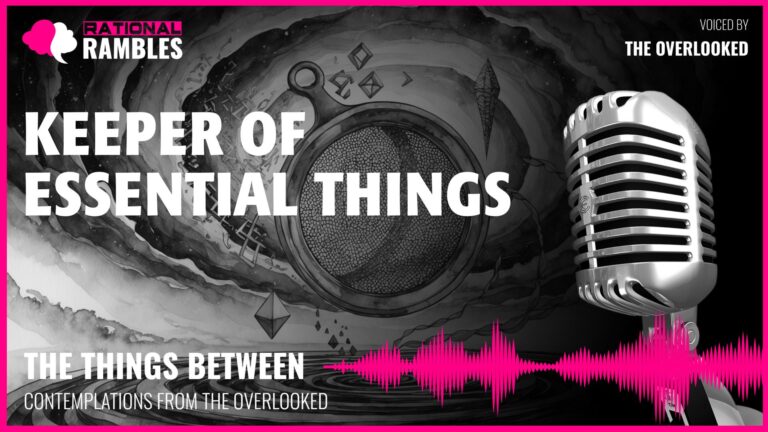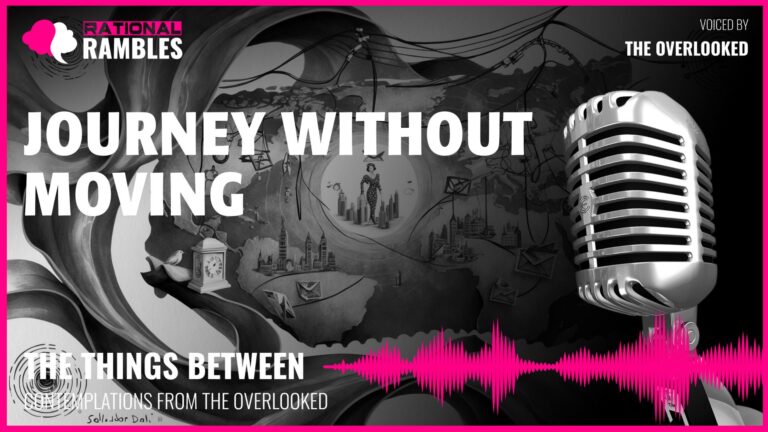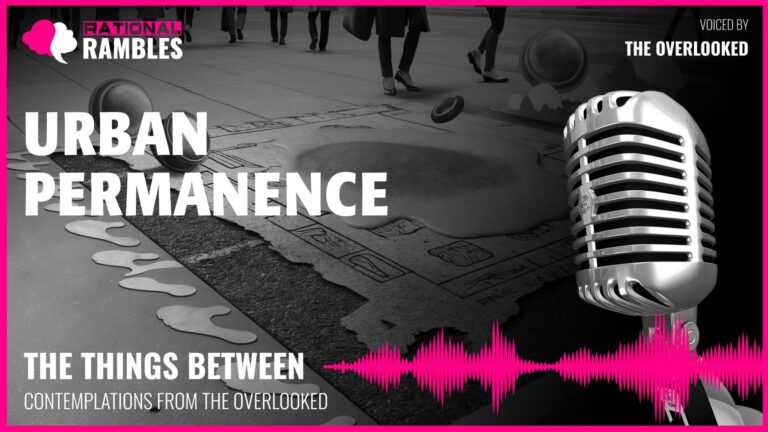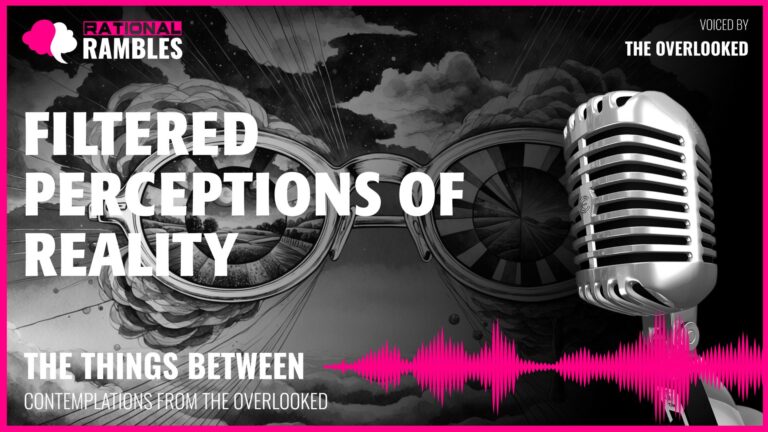Liminal Existence: The Philosophy of Transitions and Thresholds
Introduction
What does it mean to exist between states? How do we understand ourselves as beings perpetually in transition? The concept of liminality—of existing at thresholds and in transitional spaces—offers a profound framework for examining not only physical transitions but also the metaphysical nature of existence itself. This philosophical exploration delves into the significance of thresholds as both literal and metaphorical constructs, examining how these in-between spaces shape our understanding of identity, time, purpose, and consciousness.
The threshold represents a universal archetype across human experience—the point of transition between here and there, now and then, self and other. It is the physical embodiment of possibility, the materialization of choice, and the nexus point where potential futures converge and diverge. By examining the philosophical implications of thresholds, we gain insight into fundamental questions about the nature of existence, the meaning of utility, the passage of time, and the essence of consciousness itself.
The Ontology of Betweenness
To exist in the in-between is to occupy a state that challenges conventional ontological categories. Traditional Western metaphysics, from Aristotle through Descartes and beyond, has generally privileged stable states of being, creating binary oppositions: subject/object, present/absent, inside/outside. Yet transitional states—those that are neither fully one thing nor another—reveal the limitations of such rigid categorizations.
Heidegger and the Question of Being
Martin Heidegger’s concept of Dasein (literally “being-there”) offers a useful starting point for understanding liminal existence. For Heidegger, authentic human existence involves recognizing ourselves as beings suspended between birth and death, constantly projecting ourselves into possibilities. The threshold, in Heideggerian terms, might be understood as a physical manifestation of this perpetual state of becoming, a reminder that we are never simply “present” but always situated within a temporal horizon that extends before and after us.
Heidegger writes in “Being and Time” that “Dasein is not something present-at-hand which possesses its competence for something by way of an extra; it is primarily Being-possible.” This “being-possible” is precisely what thresholds represent—the materialization of potential, the moment when multiple futures exist simultaneously before a choice is made.
Eastern Perspectives on Non-Dualism
While Western philosophy has often struggled with liminal states, many Eastern philosophical traditions embrace the concept more readily. The Buddhist concept of śūnyatā (emptiness) and the Taoist notion of wu wei (non-action) both recognize the fundamental interconnectedness of supposedly opposite states. In Taoism, the value of doors and gateways lies precisely in their emptiness, as Lao Tzu notes in the Tao Te Ching: “We shape clay into a pot, but it is the emptiness inside that holds whatever we want.”
Similarly, the Japanese concept of ma—the meaningful space between objects—suggests that what appears to be “nothing” is actually charged with significance. Thresholds, in this perspective, are not merely connections between spaces but meaningful entities in themselves, defined not by what they are but by what they enable.
Contemporary Ontologies of Process
Process philosophy, as developed by thinkers like Alfred North Whitehead and Henri Bergson, offers perhaps the most natural framework for understanding threshold existence. Rather than seeing reality as composed of stable substances, process philosophers view it as a continuous flow of becoming. Whitehead’s “actual occasions” and Bergson’s “duration” both emphasize that existence is fundamentally dynamic rather than static.
In this view, thresholds are not anomalies but paradigmatic examples of reality’s true nature. They make visible what is true of all existence: that it consists of transitions, that it is always in flux. As Heraclitus famously observed, “No man ever steps in the same river twice, for it’s not the same river and he’s not the same man.” The threshold reveals this perpetual becoming that characterizes all reality.
The Phenomenology of Transition
How do we experience transitions? What is the lived reality of crossing thresholds? Phenomenology—the philosophical study of experience and consciousness—offers valuable insights into these questions, revealing how transitional experiences shape our understanding of ourselves and our world.
Embodied Knowledge and Tactile Memory
Our bodies carry implicit knowledge of thresholds. The slight pressure required to turn a handle, the moment of resistance before a door swings open, the change in temperature and light as we pass from one space to another—all these sensations become embedded in our bodily memory. As Maurice Merleau-Ponty argues in “Phenomenology of Perception,” our primary way of understanding the world is not through abstract thought but through embodied engagement.
This embodied knowledge often operates beneath conscious awareness. We navigate thresholds automatically, our bodies adjusting to their requirements without deliberate thought. Yet these interactions shape our understanding of space and possibility in profound ways. The threshold becomes not merely an object we perceive but a participant in our bodily schema, an extension of our intentionality.
Threshold Hesitation and Decision
Thresholds often produce a momentary pause, a hesitation that reveals the weight of transition. This hesitation—whether before entering an interview room, approaching a loved one’s hospital bed, or leaving home for the last time—represents a moment of acute awareness, where multiple futures hang in balance. In such moments, we experience what Edmund Husserl might call an “epoché,” a suspension of our natural attitude toward the world.
Gaston Bachelard observes in “The Poetics of Space” that “the door is an entire cosmos of the Half-open.” This “half-open” state perfectly captures the phenomenology of thresholds—the way they hold us in a moment of suspension between was and will be, here and there. In this suspension, we often experience a heightened awareness of our own agency and the consequences of our choices.
The Emotional Resonance of Transitions
Transitions are never merely physical movements through space; they are emotionally charged events that can evoke the full spectrum of human feeling. Thresholds become imbued with the emotional residue of past crossings, creating what the phenomenologist Edward Casey calls “place memory”—a spatial recording of significant experiences.
We see this emotional resonance in countless human rituals centered around thresholds: the wedding tradition of carrying a bride across the threshold, the Jewish mezuzah affixed to doorframes, the Roman god Janus who presided over beginnings and transitions. These cultural practices recognize that thresholds are not emotionally neutral spaces but rather sites of transformation charged with significance.
Time, Memory, and Permanence
Thresholds offer a unique perspective on temporality, serving as fixed points against which human time is measured. They stand at the intersection of permanence and change, revealing complex relationships between durability and transience, memory and anticipation.
Markers of Temporal Passage
Fixed objects in changing environments become inadvertent recorders of time’s passage. A threshold, installed at a specific height and remaining there while generations grow, age, and diminish around it, becomes a measuring stick against which human development can be gauged. The child who once couldn’t reach the handle grows tall enough to grasp it easily; later, perhaps, an elderly hand must strain once more.
This phenomenon reflects what philosopher Paul Ricoeur called the “intertwining of temporality and spatiality.” Physical objects inhabit both dimensions simultaneously—they persist through time while maintaining spatial presence. Their unchanging (or slowly changing) nature makes visible the more rapid transformations occurring around them.
Material Memory and Historical Witness
Objects absorb traces of their interactions, both physical (wear patterns, patina) and metaphysical (association with events). The philosopher Walter Benjamin spoke of the “aura” that objects develop through their history—an intangible but perceptible quality accumulated through time and touch. Thresholds, as frequent points of contact, develop particularly rich auras, becoming what might be called “material witnesses” to human history.
This concept connects to what French historian Pierre Nora termed “lieux de mémoire” or “sites of memory”—places or objects that serve as repositories of collective remembrance. While Nora was primarily concerned with intentional monuments, everyday objects that persist through time can similarly function as anchors for both personal and shared memory.
The Paradox of Persistent Identity
The ancient philosophical puzzle known as the Ship of Theseus asks: if we replace each plank of a ship one by one until no original material remains, is it still the same ship? This question of persistent identity applies to all long-lived objects. A threshold that has been repainted, repaired, or partially replaced over decades prompts us to consider what constitutes essential identity.
Is identity a function of continuous purpose rather than material continuity? If an object maintains its function while its substance gradually changes, has its essence remained intact? These questions connect to philosophical debates about personal identity as well—how we remain “ourselves” despite cellular replacement and psychological evolution over time.
Purpose, Utility, and the Meaning of Function
What does it mean to have a purpose? What is the relationship between utility and value? The philosophy of function offers insights into how purpose shapes existence and how utility relates to meaning.
Instrumental vs. Intrinsic Value
Philosophers traditionally distinguish between instrumental value (worth derived from usefulness) and intrinsic value (worth independent of utility). Most manufactured objects are created for their instrumental value—they exist to fulfill a function. Yet the relationship between these value types is not always clear-cut.
Objects that serve faithfully over time often transition from purely instrumental status to having a kind of intrinsic value. As philosopher Albert Borgmann suggests in his concept of “focal things,” objects that require engagement and skill (rather than mere consumption) can become centers of meaningful practice. Their value extends beyond mere utility to incorporate history, relationship, and significance.
Function as Essence: Aristotelian Perspectives
Aristotle’s teleological approach to existence suggests that each entity has a telos—an end or purpose that constitutes its essential nature. In this view, to understand what something is requires understanding what it is for. The essence of a knife lies in cutting, of an eye in seeing.
Applied to thresholds, this perspective suggests that their essence lies not in their physical composition but in their function as mediators between spaces. Their purpose—to facilitate passage while maintaining separation—defines what they fundamentally are. When they fulfill this purpose effectively, they achieve what Aristotle would call their “excellence” or arete—the fulfillment of their essential nature.
The Dignity of Utility
There is a particular kind of dignity in performing one’s function well over time. Philosopher Hannah Arendt distinguishes between “work” (creating durable objects) and “labor” (maintaining life through repetitive tasks). While Western culture has often privileged the former, there is profound value in the latter—in the consistent performance of necessary functions that maintain the fabric of everyday life.
Objects that serve faithfully embody this dignity of utility. Their value lies not in being remarkable but in being reliable, not in drawing attention to themselves but in facilitating human activity so seamlessly that they become almost invisible. This notion connects to the Japanese concept of mingei or “folk craft”—the beauty of ordinary, useful objects made by anonymous craftspeople.
Consciousness, Awareness, and Object-Being
What constitutes consciousness? Is awareness necessarily limited to biological entities? The philosophical examination of object-being offers provocative questions about the nature of awareness, receptivity, and existence.
Panpsychism and Object Experience
Panpsychism—the view that consciousness or mentality is a fundamental feature of the physical world—has experienced a revival in contemporary philosophy of mind. Philosophers like Galen Strawson and Thomas Nagel have argued that consciousness may exist in some form throughout all matter, though perhaps in dramatically different forms from human consciousness.
While traditional Western philosophy has tended to draw sharp lines between conscious beings and non-conscious matter, panpsychism asks us to consider whether this binary distinction accurately reflects reality. If consciousness exists on a spectrum rather than as a binary quality, might objects possess some minimal form of experience—a receptivity to their environment, an “awareness” of the forces acting upon them?
Agency, Receptivity, and Response
Even without adopting full panpsychism, we might consider more modest claims about object receptivity. Objects respond to their environments—metals expand and contract with temperature, materials wear according to patterns of use, mechanisms adapt to repeated actions. While not conscious in the human sense, these responses constitute a kind of “material agency” that philosopher Jane Bennett calls “thing-power”—the capacity of inanimate things to act as quasi-agents.
This perspective challenges the notion that agency requires consciousness as humans understand it. Objects participate in causal networks, influencing outcomes and shaping possibilities. A threshold that sticks slightly, requiring an adjusted grip, subtly shapes human behavior; it participates in determining how interaction unfolds rather than being a passive recipient of action.
New Materialisms and Object-Oriented Ontology
Recent philosophical movements like New Materialism and Object-Oriented Ontology (OOO) have sought to decentre human experience, considering objects as entities with their own modes of existence rather than mere props in human drama. Philosopher Graham Harman argues that objects always exceed our knowledge of them—they have a reality that withdraws from all relations, including our perception and understanding.
This approach suggests that we should consider objects not merely as they appear to us or serve our purposes, but as beings with their own “object-hood” that exists independently of human perception. A threshold exists and persists whether or not humans notice or use it; it has properties and potentials that may never be fully actualized in human interaction.
Relationships, Connections, and Mediation
How do we understand the entities that mediate relationships? What philosophical significance lies in the connections between spaces, people, and states of being? The study of mediation offers insights into how intermediate entities shape our understanding of connection.
The Philosophy of Mediation
Mediating entities—those that facilitate relationships between other entities—have special philosophical significance. They challenge the notion of direct, unmediated experience by highlighting the role of intermediaries in all relationships. As philosopher Bruno Latour argues in his Actor-Network Theory, mediators are not neutral carriers but active participants that transform the relationships they enable.
Thresholds serve as physical embodiments of this mediating function. They do not simply connect spaces but transform the relationship between them—controlling access, establishing boundaries, creating privacy, enabling community. They remind us that connection is never direct but always mediated through physical, social, and conceptual intermediaries.
Trust, Reliability, and Social Infrastructure
The philosopher Annette Baier defines trust as “accepted vulnerability to another’s possible but not expected ill will.” This definition applies not only to interpersonal relationships but also to our relationships with objects and systems. We trust that doors will open, that handles will turn, that thresholds will support our weight—accepting vulnerability to potential failure.
This trust forms part of what sociologist Susan Leigh Star calls “infrastructure”—the often-invisible systems and objects that support social life. We notice this infrastructure primarily when it fails; its proper functioning allows it to recede from attention. Yet this very invisibility masks its profound importance. The reliable functioning of mediating objects creates the conditions for social life, establishing what philosopher John Searle calls the “background”—the set of capacities, abilities, and dispositions that enable intentional states to function.
The Ethics of Connection
Thresholds raise important ethical questions about inclusion and exclusion, access and barrier. Who is permitted to cross? Whose passage is impeded? These questions connect to broader philosophical concerns about hospitality, community, and justice.
Philosopher Jacques Derrida distinguished between conditional hospitality (welcome extended with limitations and expectations) and unconditional hospitality (absolute openness to the other). Thresholds materialize this tension—they can welcome or exclude, facilitate or prevent. The ethical dimensions of thresholds emerge most clearly in contexts of disability access, homelessness, or migration, where questions of who may cross and under what conditions take on urgent political significance.
The Symbolism of Thresholds in Human Culture
How have human cultures understood and represented thresholds symbolically? What archetypal meanings attach to the concept of transition points? Exploring cultural symbolism reveals the deep psychological and spiritual significance of thresholds.
Mythological and Religious Significance
Across cultures, thresholds appear as spiritually charged locations. The Roman god Janus, two-faced to look simultaneously forward and backward, presided over doorways and transitions. In Hinduism, thresholds mark the boundary between sacred and profane space, often adorned with protective symbols. Japanese Shinto gates (torii) mark the transition from mundane to sacred space.
These religious associations reflect an intuitive understanding of thresholds as more than physical structures—they are symbolic boundaries between states of being. Crossing a threshold often signifies transformation, marking a change in status, identity, or spiritual condition. This symbolism appears in religious rites of passage across traditions, from baptism to bar mitzvah to Buddhist ordination.
Literary and Psychological Archetypes
In narrative theory, the “threshold crossing” represents a fundamental story element, often marking the protagonist’s commitment to transformation. Joseph Campbell’s analysis of the hero’s journey identifies the “crossing of the first threshold” as a key stage where the hero leaves the ordinary world and enters the realm of adventure and transformation.
Psychologically, thresholds represent what Carl Jung might call an archetype—a symbolically charged image that resonates with the collective unconscious. The door, gateway, or portal appears consistently in dreams and fantasy as a symbol of opportunity, transition, or boundary, suggesting its deep psychological significance in human experience.
Thresholds as Metaphors in Philosophy
Philosophical discourse itself often employs threshold metaphors to describe intellectual transitions. We speak of “opening doors” to new understanding, of intellectual “breakthroughs,” of “crossing the threshold” of knowledge. Edmund Husserl describes phenomenological reduction as “crossing the threshold” into a new way of seeing.
These metaphors are not merely rhetorical flourishes but reflect something essential about how we conceptualize intellectual progress. The threshold serves as what philosopher Max Black called an “interactive metaphor”—one that does not simply transfer meaning but creates new understanding through the interaction of domains. The physical experience of crossing thresholds helps us conceptualize abstract transitions in understanding.
Impermanence, Mortality, and Legacy
How do durable objects relate to human mortality? What philosophical insights emerge from the confrontation between lasting materials and transient lives? The relationship between permanence and change offers profound insights into mortality and meaning.
Witnessing Generations
Objects that endure through multiple human lifetimes serve as witnesses to generational change. They offer a unique perspective on human temporality—seeing not just individual aging but the succession of generations. This witnessing function appears in heirlooms, monuments, and lasting architecture, all of which serve as material links between past and future people who may never meet directly.
Martin Heidegger described human existence as “being-towards-death,” suggesting that mortality fundamentally shapes our experience. Objects that outlast us provide a counterpoint to this temporal structure—they represent what we might call “being-beyond-death,” persisting after individual humans have gone. Their continued existence offers both comfort (in the sense of legacy) and melancholy (in highlighting our own transience).
Material Legacy and Memory
Philosopher Avishai Margalit distinguishes between “common memory” (shared by contemporaries) and “shared memory” (transmitted across generations). Durable objects facilitate this transmission, carrying traces of past use into future encounters. They become what Pierre Nora calls “realms of memory”—physical entities that anchor collective remembrance.
Yet the memories objects carry are partial and interpretive. As philosopher Walter Benjamin notes, objects from the past arrive in the present as fragments divorced from their original context. We reconstruct their meanings based on our present understanding, creating what Benjamin calls a “constellation” between past and present. The threshold that has witnessed decades of passages cannot transmit its experiences directly—what it “knows” must be imaginatively reconstructed.
The Consolation of Durability
In a world of impermanence, durable objects offer a kind of consolation. Philosopher Alain de Botton suggests that beautiful buildings provide “a more dependable happiness than the relationships, victories and acquisitions that we often feel are the touchstones of our contentment.” This observation might extend to all well-crafted objects that endure—they offer stability amidst flux.
This consolatory function connects to what philosopher Martin Hägglund calls “secular faith”—the commitment to values that transcend individual existence without requiring belief in eternal afterlife. We create and preserve durable objects not because they will last forever (they won’t), but because they may outlast us, carrying something of our values and practices into a future we will not see.
Conclusion: The Wisdom of Thresholds
What wisdom can we derive from threshold existence? What does the study of transitional spaces teach us about being human? The philosophical examination of thresholds offers several profound insights about the nature of existence itself.
First, thresholds remind us that transition is not exceptional but essential to existence. To be is to be in flux, to exist between states, to be constantly becoming rather than simply being. As Heraclitus observed centuries ago, “Everything flows.” The threshold makes physically manifest this fundamental truth, reminding us that stability is always temporary, that change is the only constant.
Second, thresholds highlight the significance of intermediary entities and states. Western thought has often privileged endpoints over journeys, products over processes, stable states over transitions. Yet the in-between has its own value and meaning. The threshold reminds us that mediation is not secondary but primary—that connections between things are as real and significant as the things they connect.
Third, thresholds demonstrate the complex interplay between permanence and change. They embody what philosopher Paul Ricoeur called “narrative identity”—persistence through change, continuity despite transformation. Like humans, thresholds maintain identity while constantly changing, their surfaces weathering, their mechanisms adapting, their meanings evolving. They offer a material metaphor for how we might understand our own persistence through time—not as unchanging essence but as continuous narrative.
Fourth, thresholds reveal the dignity of inconspicuous utility. In a culture that often celebrates the exceptional, the extraordinary, and the attention-grabbing, thresholds perform their function with quiet reliability, their value lying precisely in how they facilitate human activity without drawing attention to themselves. They remind us of the profound worth of that which serves faithfully without demanding recognition.
Finally, thresholds embody the philosophical principle that limitation creates possibility. A threshold limits movement between spaces, yet this very limitation creates the possibility of meaningful transition. As philosopher Byung-Chul Han argues, a world without boundaries would not be a world of freedom but one of undifferentiated meaninglessness. The threshold, in establishing boundary, creates the conditions for meaningful crossing.
In contemplating thresholds, we ultimately contemplate ourselves—beings who exist in time, who occupy liminal states, who find meaning in transition. The wisdom of thresholds is, in the end, a wisdom about the human condition: we are always at the threshold, always between what was and what will be, always in the process of becoming. In recognizing this fundamental liminality, we may find a more authentic way of being in the world—one that embraces transition not as interruption but as the very essence of existence.


